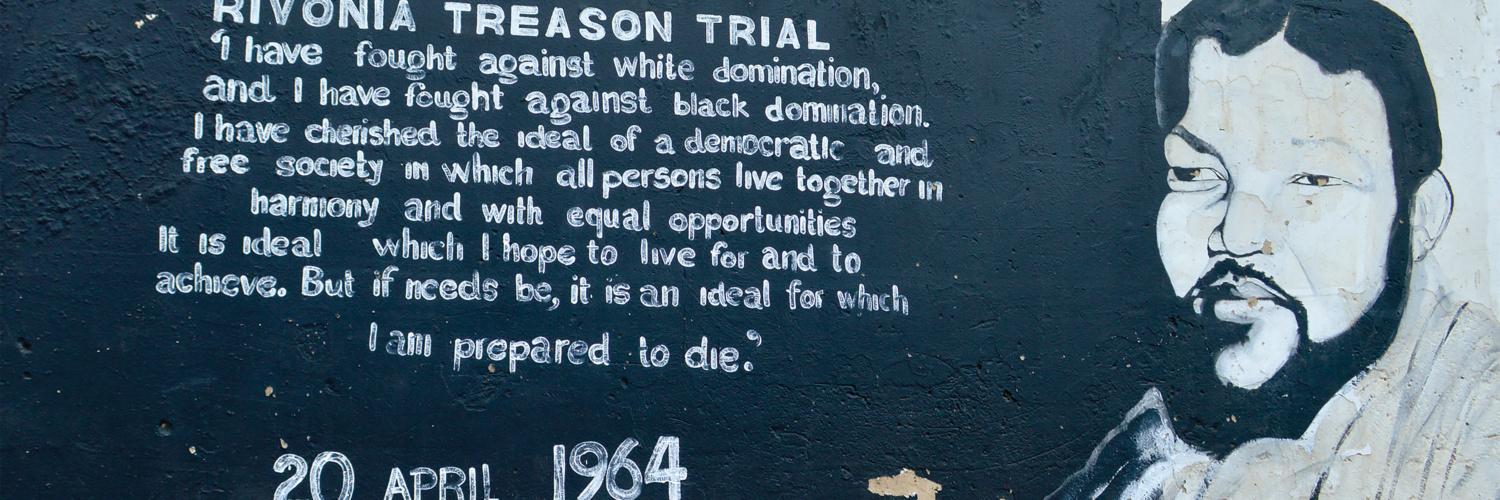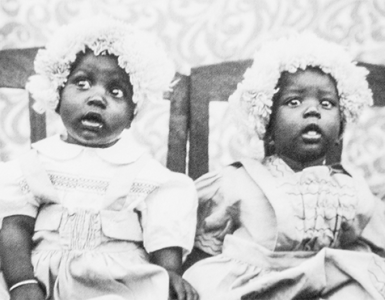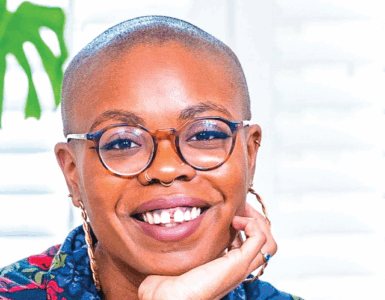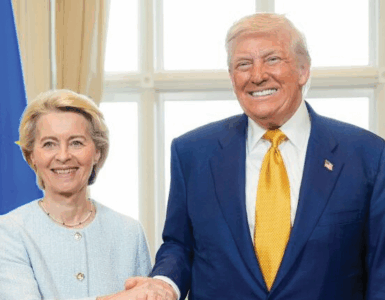RESISTANCE: Nelson Mandela is deified everywhere. But typically missing is an account of his early years, when he insisted that Marxism be responsive to South African conditions. In the following question-and-answer interview researcher and writer Chris Webb interviews author the book Spear, Paul S Landau…
By Chris Webb
In the extensive mythologising of Nelson Mandela’s life, we frequently encounter a flattened political figure without nuance or contradiction. In a memorial following his death, then US President Barack Obama described him as an heir to Gandhi and Abraham Lincoln, a figure who defeated apartheid through moral courage alone. Then there is the Mandela of T-shirts and television specials, the smiling grandfather, the Mandela of reconciliation and compromise.
These interpretations serve a variety of political purposes, but they all neglect the fact that Mandela’s intellectual and political development underwent a series of transformations over the course of his life. In Paul S Landau’s latest book, Spear: Mandela and the Revolutionaries, we encounter an altogether different Mandela, one who is very much made by the company he keeps, the places he travels, and the books he reads. This is the Mandela of the anti-colonial era, preoccupied with military strategy, who makes marginal notes on Mao, and who debates the success of the Cuban revolution with his comrades.
Spear covers the period, roughly, from the Sharpeville massacre of 1960 to the Rivonia trial of 1963-1964. It marks a critical period in the history of the anti-apartheid movement, as state repression intensifies and as the space for aboveground political opposition diminishes. It tells the story of how Mandela, alongside other activists in the ANC and Communist Party, sought to channel popular anger into organized violence against the apartheid state, and in doing so perhaps create the possibilities for revolution. This is a period of significant personal and political turbulence in Mandela’s life. He moves from the anti-communism of his ANC-Youth League days to becoming a high-ranking member of the Communist Party. He challenges the non-violent principles of then ANC-president Albert Lutuli, undergoes military training in Ethiopia, and seeks aid from the Soviet Union and China. What emerges is the complexity of Mandela’s thought, his insistence that Marxism be responsive to South African conditions, and his shrewd organizational skills.
Landau engages in a careful reconstruction, piecing together Mandela’s readings, debates, movements, and friendships during this period. It is rich in detail, at times almost dizzying, yet provides a sense of what was at stake in a period when revolution seemed possible.
CHRIS WEBB (CW): I wanted to start by asking you about the photo on the cover of your book. Taken in Ethiopia in 1962, we see a young, bearded Mandela flanked by two individuals, one of them wearing a military officer’s uniform. Can you provide some of the context for this photo. Who are the two men in this photo and what was Mandela doing in Ethiopia?
PAUL S LANDAU: The USA and world edition cover shows Mandela beside Tadesse Biru and Fekadu Wondemu, two members of the Ethiopian emperor’s special guard unit called the Fetno Derash. Tadesse was the superior officer and they had both received special military training in Israel. His son, Musie Tadesse, works in Washington DC as the managing doorman and receptionist in a big Washington DC apartment building lobby. He showed me the original photograph. These men are with Mandela because they trained him for over three weeks in military basics, including weaponry, in 1962, and they became friends. They represent one pole of revolutionary logic to Mandela, if you will. They were part of a surviving 18th-19th century African empire resonant of African heritage and power, with roots in ancient Aksum.
The South African cover is different, and shows Mandela in an undated, unprovenanced photograph. It is from Morocco from January or February or March 1962. I made inquiries in Algeria, but it can only roughly be dated. Mandela is looking up from some papers with two unnamed Algerians, likely Front de Libération Nationale (FLN) or Armée de libération nationale (the FLN’s military wing) officials. Right behind Mandela’s left shoulder is Jacques Vergés, the famous French-Thai lawyer who later defended Carlos “the Jackal.”
CW: Your book does an incredible job of situating the emergence of MK within the broader currents of anti-colonial struggle that characterised the early 1960s. Could you describe where Mandela and his comrades looked to for inspiration in these early days?
PSL: In the 1940s and 50s, Mandela’s seniors in the ANC had organised connections to Caribbean and American Black leaders—these were cut off by government in the 1960s. In the turn to organised violent resistance, Mandela was following the lead of Lenin, Mao, Che, Castro, and to some extent, the Irgun, the Jewish extremist resistance against the British in Palestine. The immediate example of Malaysia, the Philippines, Cuba, and especially China occupied Mandela’s attention as a reader of revolutionary writings. China’s influence came through early leaders’ training in China, and Mandela’s (and Moses Kotane’s and OR Tambo’s) interest in rural rebellion. At the same time, the Pan Africanist Congress (PAC) anti-apartheid fighters paid attention to Congo and the rise of Patrice Lumumba and looked to Ghana’s pan-African leadership. The point is to recognise that Mandela operated at the confluence of local understandings and internationally espoused revolutionary practices.
CW: Many of the historical accounts of MK suggest it was either the creation of the South African Communist Party or a result of the ANC’s retreat underground and rejection of non-violence. Can you tell us how your book complicates these conventional readings? Where did the decision to engage in violent resistance come from?
PSL: The shift in the movement toward violence came on two fronts. First, many young people wished to fight the apartheid government, full stop. This fed instances of public violence, and Mandela recognised the dangers of unorganised violence. Whenever he, or Walter Sisulu, toured the country in secret, they canvased youth. A similar push was responsible for the early formation of Poqo units in and around the PAC, and that also accelerated Mandela’s thinking. The second front came out of initial discussions among men in jail in Johannesburg and elsewhere during the early “state of emergency” declared by [Hendrik] Verwoerd after the 1960 Sharpeville killings. They decided they no longer wanted to limit the ANC and SACP to non-violence. Their discussions did not contain details, but they informed Mandela’s organisation of MK, and his role in the ANC “Action Group.”
But an important thing Spear explores is how the PAC’s Poqo and MK (then from 1962 ANC-MK) influenced and modelled one another. Historians have treated their trajectories as separate and distinct even though some of their protagonists knew one another and even worked with each other and had similar original affiliations. So, I would say, the abstraction of a very particular ANC and MK history, that is what I’d like to open up to doubt.
CW: I was struck by how this turn to violence had such a transformative impact on those involved—even as it didn’t have much of a material impact on the apartheid economy. How were acts of sabotage understood in the broader context of the struggle? Were they seen as weakening apartheid’s infrastructure, or were they symbolic acts that would spark greater resistance?
PSL: That is a question I struggled with. The meaning of downing a pylon was smeared across the representational and the transformative (as an action), in unpredictable ways. One could point to the effect, if effective, or the noise and momentary inconvenience as a sign, if ineffective. This bifurcation of standards, where two emphases could tag-team, ensured that for every delay or underwhelming action, the suffering through striving in any form was still valourised. It won’t do to understand MK as entirely a strategic operation with a fixed political target. Mandela understood that the state would respond in such a fashion that only escalation into new forms of chaos were possible. He well understood the future trajectory in which armed actions initiated further disruption, and in which ordinary civilian life was to be impaired.
But what was being explored at the time was something that could not (as it turned out) be in South Africa, an urban and rural simultaneity using weapons and explosives and snipers, leading to the establishment of several simultaneous liberated centres, including in Johannesburg, in which, under a Unity Front, MK would offer safe harbour to fighters. This however came apart under pressure just as aspects were begun, and it fractured along different lines in different parts of South Africa.
CW: I want to ask about how this period of intense political activity shaped and reshaped Mandela’s political thinking. He was schooled in the radical program of the ANC-Youth League in the previous decade, but his thinking around Pan Africanism, communism, and non-racialism goes through some mutations during the period you cover in the book. Could you describe these changes and their influence?
PSL: Mandela was a rather high-born fellow, educated and worldly, who emerged as a leader from within the core Youth League in Johannesburg. The principle of African leadership of African organisations is something Mandela cherished. From his first experiences as a lawyer, Mandela had white friends, and sought out urban, non-provincial interactions with people of all races. Everyone around him was joining the illegal South African Communist Party (SACP), and when he did so, almost certainly in 1955, he carried with him the reputation of being the leading activist leader of the ANC. At the same time, Mandela and his close comrades sought out world pan-Africanists and worked very hard to achieve a united front with the PAC—something that failed to materialise.
In 1962, after seven years, Mandela countenanced a total end of SACP activity per se, for MK and the ANC, such that after that—not entirely successfully, especially as the Party was unimpeded in London—Moses Kotane pursued a zero-party policy for all MK camps. My suggestion, in Spear, is that this demotion of the Party was the prelude to a renewed effort to ignite a South African Unity Front (SAUF) with other organisations, including the remains of the PAC in South Africa and abroad. The popularity and persistence of the PAC-Poqo, as an interlocutor with the ANC-MK and a target for making a functioning unity coalition in ’62, is an argument of the book.
CW: I think many people associate United Fronts with the United Democratic Front of the 1980s. Could you talk a bit about this idea for a South African United Front (SAUF) of the 1960s, where it came from and why it failed at this juncture?
PSL: From a foreign point of view, there should only be one African liberationist organisation, and subsidiaries, in one country. Kwame Nkrumah ran a special fund for liberation movements and kept funds for the initial iteration of SAUF abroad, involving the ANC, PAC, a Namibian organisation, and repeatedly brought ANC and PAC representatives together. A real unity would entail internal cooperation, too. The second centre was in Dar-es-Salaam, where Julius Nyerere had a looser vision of confederate or community order. Mandela attended a Pan African Freedom Movement of Eastern and Central Africa (a precursor to the AU) in Addis Ababa with OR Tambo. It was at this point, when Mandela returned from abroad in 1962, that we see his revolutionary nationalism, influenced by Castro for one, but also by world African and Black anti-colonialism.
Why did a possibly transformative unity fail? We do not have a lot of real evidence to put in between two covers. I would suggest that the CIA’s archives and the SIS (British MI6 intelligence) cables be fully investigated, first, because the full story of who was compromised and when in the PAC ranks (and the ANC’s) has not (in my opinion) been fully illuminated. But surely Mandela’s capture was a real blow. And the use of torture and isolation cells broke a lot of MK just as unity would have needed a boost.
CW: Mandela was a member of the Communist Party, but he was hardly an orthodox Marxist; He wasn’t following a party line from Moscow. What sort of a communist was Mandela and how was his Marxism refracted through South African conditions?
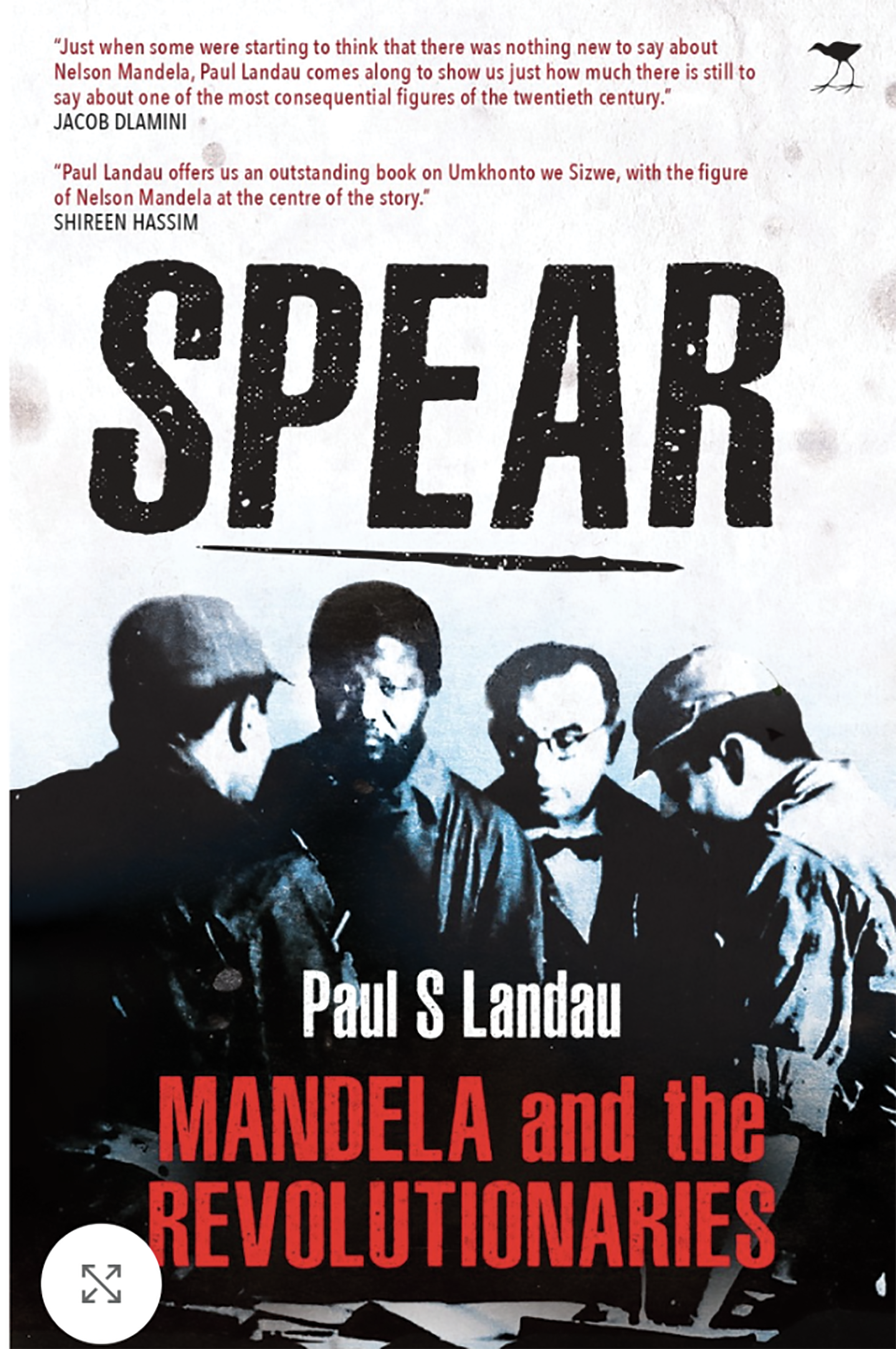
PSL: For Mandela, the ongoing tension in communist thinking was this: between wanting to follow the “people,” and wanting, or needing, to lead the “people” when violence loomed. Mandela was interested operationally in durable chains of command resilient to disruption. He and a small committee would be in charge, because no above-board democratic process was possible, in their organisation, given state repression.
But I think Mandela was also a communist in that he espoused recognition of contradictions that could not be resolved, except by challenging production and distribution in their existing forms. So, the interest in the vast spaces of the African and farm-labour tenantry countryside as areas of organisation was real. Second, there is a connection to surviving traditional (but transformed) chiefly structures, some of which Mandela well-knew were on the ANC’s side. But none of that was done, and the urban side of spatial liberation was premised entirely on secrecy.
CW: I wanted to ask about the influence of what you call “Black Marxism” on the SACP. How did figures like JB Marks, Moses Kotane, Dan Tloome, Nelson Mandela and Walter Sisulu shape the political and theoretical orientation of the party during this period?
PSL: One vein of Black Marxism is in the self-narration of the movement; the ideology of anti-apartheid being explicitly tied to a project of revealing British complicity and other capitalist mechanisms in the long dispossession of Africans from the land. But there was also the intersection between global Black thinkers and activists, instantiated by great Caribbean leaders and thinkers and communist parties, which is Black Marxism, and Mandela found himself within these currents.
As to the second part of the question, in Spear,I spend time sketching out biographies just briefly enough to allow the reader to know many of these men and women, Sisulu, Marks, Moses Kotane, Dan Tloome, and lesser-known people who were in fact quite important. These and dozens of other men and women populate Spear because they were the colleagues in leadership and some in middling positions around Mandela without which nothing would have happened. There is, in the book trade more generally, a lack of toleration with naming a lot of Black people interacting with each other. So, in a sense, it’s partly to restore Mandela’s affiliation to a Black liberationist project with others, that I use the term “Black Marxist.”
That being said, he walked a narrow path, and had to dodge around a lot to keep the focus on building a vanguard military force, his plan; building a broad coalition among ANC and PAC, seeking anonymity sometimes and not others, cooperating, if with doubts, toward presenting a united front (SAUF or otherwise) outside and potentially within South Africa.
Mandela wanted to operate in a durable chain of command at first without tapping the reorganised, residentially based ANC. His last move came in July 1962, when he demoted the Communist Party after conversations with his peers (I found this document) and went to speak to Chief Albert Luthuli, president of the ANC, about this. The whole underground ANC was to be made part of immediate revolutionary activity, Black and class liberation.
No coincidence perhaps that around this time, the local CIA man fingered Mandela to the Special Branch cops.
CW: On that last point, I was surprised to read about the role that MI6 played in Botswana, essentially helping to organize passage for many revolutionaries to leave the country and be trained abroad in China or the Soviet Bloc. At the same time, Don Rickard, the CIA’s man in Durban, admitted to tipping off the police leading to Mandela’s arrest. How can we understand the complex, and at times seemingly contradictory, roles of intelligence services during this time?
PSL: Perfidious Albion, on one level. But, on another, in the retiring colonial service at this intersection were a lot of strangely somewhat sympathetic and interesting persons. It is unpopular to say this, no doubt. But if you were devoted to the tenor of the times and were part of the imperial edifice, and looked at the statements of the Labour Party and saw the Union Jacks coming down, and understood your function as working toward that end, well… But in the end, times were changing, and new connections were being made. One finds the Fetno Derash and the Irgun model side by side with a long-term Maoist focus in MK, securing some Soviet money, but with British SIS-funded border intelligence abetting them. Everything was in motion.
It was different for the CIA. They may have had a narrower view. As you say, CIA man Don Rickard said he did it, and then told John Irvin’s film crew and James Sanders, “I did it,” again. I’m also aware of someone who told Rickard that Mandela was at the soiree he attended before being arrested, but I’ve buried that name because no intel is foolproof and there is no point making a person or family a target.
CW: I want to ask about method. You write that many books both on Mandela and this period “adopt a perspective of world Whiteness,” in which Mandela, Sisulu, Tambo and others are figureheads but aren’t taken seriously as political thinkers and strategists. What method does the book employ to try and address this?
PSL: It’s based overwhelmingly (but not exclusively) on the remembrances, in interviews transcribed, edited into books, or (sometimes) in raw audio, with Black men and women involved in MK from 1960–1963. I had to fight against the grain of archival and source availability, because it is mostly white leaders and comrades who have left telling, personal, confessional memoirs, or attracted admiring and yet penetrating biographers. But there are audio and transcribed records, left by my colleagues, whom I thank (and got permissions from), and they are in no way responsible for what I make of their interviews or mistakes I make. But that is what allowed me to get to know many of the protagonists around Mandela.
But there is a certain discourse: The real communists are imagined to be the white ones, which is and was wrongheaded. Now, true, there was no more stable a party member than “Rusty” Bernstein, for instance, a relatively unknown Jewish British-born South African, and no more critical a lynchpin in MK, than Jack Hodgson, a former fortune-hunting machinery operator in central African mining. But Edwin Mofutsanyana, Yusuf Dadoo, Moses Kotane, and others broke that barrier. From 1955, Duma Nokwe, Joe Matthews, Walter Sisulu, and Nelson Mandela among other African ANC members were also all inside the SACP. The transition in the Party was that the old guard was moved to accept revolutionary strategic action, first in Mandela’s participation in Alfred Xuma’s removal as ANC president, and then later, in the decision to change tactics and use violence.
*The author and interviewee, Paul S Landau, is a professor of history at the University of Maryland, College Park, and a fellow of the History Centre of the University of Johannesburg. The Interviewer, Chris Webb, is a South African writer and researcher based in Toronto. He is writing a book on the meaning and practice of solidarity in the Canadian anti-apartheid movement.

